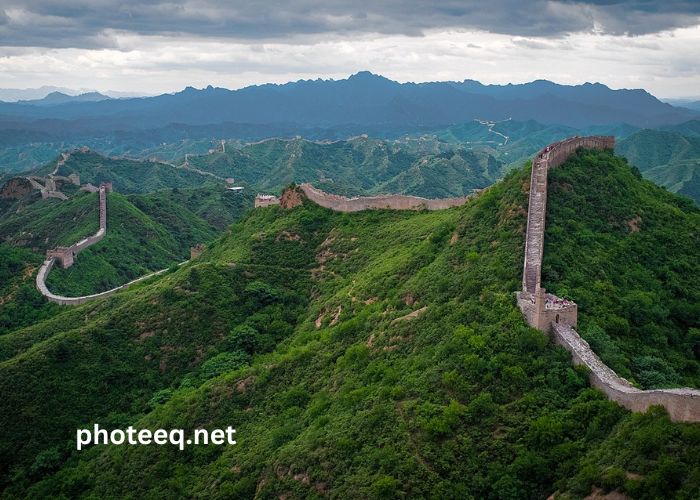The Great Wall of China, a monumental feat of ancient engineering, is one of the most iconic structures in the world. Spanning thousands of miles across northern China, it has long been a source of fascination for historians, travelers, and photographers alike. Capturing the essence of this ancient wonder through photography allows us to appreciate its grandeur, historical significance, and the breathtaking landscapes it traverses. In this comprehensive article, we will explore the history of the Great Wall, the best spots for photography, tips for capturing stunning images, and the stories behind some of the most famous photos of this timeless marvel.
The Historical Significance of the Great Wall of China
The Great Wall of China was built over several dynasties, starting as early as the 7th century BC, with the most well-known sections constructed by the Ming Dynasty (1368–1644). It was originally conceived as a defense mechanism to protect Chinese states and empires from invading nomadic tribes from the north. Over centuries, it evolved into a complex network of walls, watchtowers, and fortifications, stretching over 13,000 miles.
Architectural Marvel
The Great Wall is not a single, continuous wall but a series of walls and fortifications made of stone, brick, tamped earth, wood, and other materials. Its construction involved millions of laborers, including soldiers, peasants, and prisoners. The ingenuity of its design, with watchtowers, barracks, and signaling capabilities, makes it one of the most impressive architectural achievements in human history.
Cultural Symbol
Beyond its military purpose, the Great Wall has become a symbol of China’s enduring strength and perseverance. It represents the unity and determination of the Chinese people throughout history. Today, it stands as a UNESCO World Heritage Site and one of the New Seven Wonders of the World, drawing millions of visitors from around the globe each year.
The Best Spots for Great Wall of China Photography
For photographers, the Great Wall offers a plethora of opportunities to capture its majesty. However, certain sections are particularly renowned for their photographic potential.
Badaling
Located about 50 miles northwest of Beijing, Badaling is the most visited and best-preserved section of the Great Wall. Its accessibility and restored condition make it a favorite spot for photographers. Here, you can capture the wall as it winds through the mountains, with panoramic views that are especially stunning during sunrise and sunset.
Mutianyu
Mutianyu, approximately 45 miles from Beijing, is another popular section known for its scenic beauty and fewer crowds compared to Badaling. The lush greenery surrounding this part of the wall provides a stunning contrast to the ancient stone structure. Photographers can take advantage of the cable car or toboggan ride for unique aerial shots.
Jinshanling
For those seeking a more rugged and less crowded experience, Jinshanling, located about 80 miles from Beijing, is an ideal choice. This section features both restored and wild, unrestored segments, offering a perfect blend of history and natural beauty. The undulating terrain and watchtowers create dramatic compositions, especially during the golden hours.
Simatai
Simatai, around 75 miles northeast of Beijing, is known for its steep and treacherous sections. This part of the wall has retained much of its original appearance, providing a more authentic and less commercialized experience. The Simatai section is particularly beautiful at night when it is illuminated, offering unique nighttime photography opportunities.
Huanghuacheng
Huanghuacheng, approximately 40 miles from Beijing, is notable for its lakeside views and submerged sections of the wall. The combination of water and wall creates striking reflections and a serene atmosphere, making it a favorite spot for landscape photographers.
Tips for Capturing Stunning Great Wall of China Photos
Photographing the Great Wall requires careful planning and consideration of various factors to ensure you capture its essence and beauty.
Timing is Everything
The time of day greatly impacts the quality of your photos. Early morning and late afternoon provide the best lighting conditions, with soft, warm light that enhances the textures and colors of the wall. Sunrise and sunset shots are particularly breathtaking, with the sun casting long shadows and creating dramatic contrasts.
Seasonal Variations
Each season offers a unique perspective of the Great Wall. Spring brings blooming flowers and lush greenery, summer provides clear skies, autumn offers vibrant foliage, and winter covers the wall in a blanket of snow. Consider the seasonal variations when planning your photography trip to capture different moods and atmospheres.
Equipment Essentials
While a good camera is essential, other equipment can enhance your photography experience. A sturdy tripod is crucial for capturing sharp images, especially in low light conditions. Wide-angle lenses are ideal for capturing the expansive landscapes, while telephoto lenses can help highlight distant details and watchtowers. Additionally, neutral density filters can be useful for managing exposure in bright conditions.
Composition Techniques
To create compelling compositions, consider using leading lines to draw the viewer’s eye along the wall. The wall itself is a natural leading line, but paths, stairs, and watchtowers can also be used to guide the viewer’s gaze. Experiment with different angles and perspectives to showcase the wall’s scale and intricacies. Including elements such as people, wildlife, or vegetation can add a sense of scale and context to your photos.
Patience and Persistence
Capturing the perfect shot often requires patience and persistence. Be prepared to wait for the right lighting conditions, weather, and moments when the wall is free of crowds. Exploring different sections and viewpoints can also yield unique and unexpected compositions.
Famous Great Wall of China Photos and Their Stories
Throughout history, many photographers have captured iconic images of the Great Wall, each with its own story and significance.
Robert Capa’s Iconic Image
Renowned war photographer Robert Capa captured one of the most famous images of the Great Wall during his visit in 1938. His black-and-white photograph, depicting Chinese soldiers marching along the wall, highlights its historical significance as a military fortification. Capa’s image remains a powerful reminder of the wall’s role in China’s defense history.
Michael Yamashita’s Aerial Masterpieces
National Geographic photographer Michael Yamashita is known for his breathtaking aerial shots of the Great Wall. Using drones and helicopters, Yamashita captured the wall from above, revealing its intricate patterns as it snakes through the mountains. His work showcases the wall’s immense scale and the stunning landscapes it traverses.
William Lindesay’s Exploration
British adventurer and photographer William Lindesay dedicated decades to exploring and documenting the Great Wall. His photographs, taken during his extensive expeditions, provide a comprehensive visual record of the wall’s various sections and conditions. Lindesay’s work has contributed significantly to the preservation and awareness of the Great Wall’s cultural heritage.
Modern Perspectives
Contemporary photographers continue to capture the Great Wall from fresh perspectives. With advancements in technology, including drones and high-resolution cameras, today’s photographers can document the wall in unprecedented detail. Social media platforms like Instagram have also enabled photographers to share their work with a global audience, inspiring new generations to appreciate and explore this ancient wonder.
Conclusion
The Great Wall of China is not only a historical and architectural marvel but also a photographer’s paradise. Its vast expanse, diverse landscapes, and rich history provide endless opportunities for capturing stunning images. Whether you are an amateur photographer or a seasoned professional, the Great Wall offers a unique and rewarding experience. By understanding its history, exploring the best spots for photography, and applying effective techniques, you can create compelling photos that capture the timeless beauty and significance of this ancient wonder. So pack your camera, embark on an adventure, and let the Great Wall of China inspire your photographic journey.







